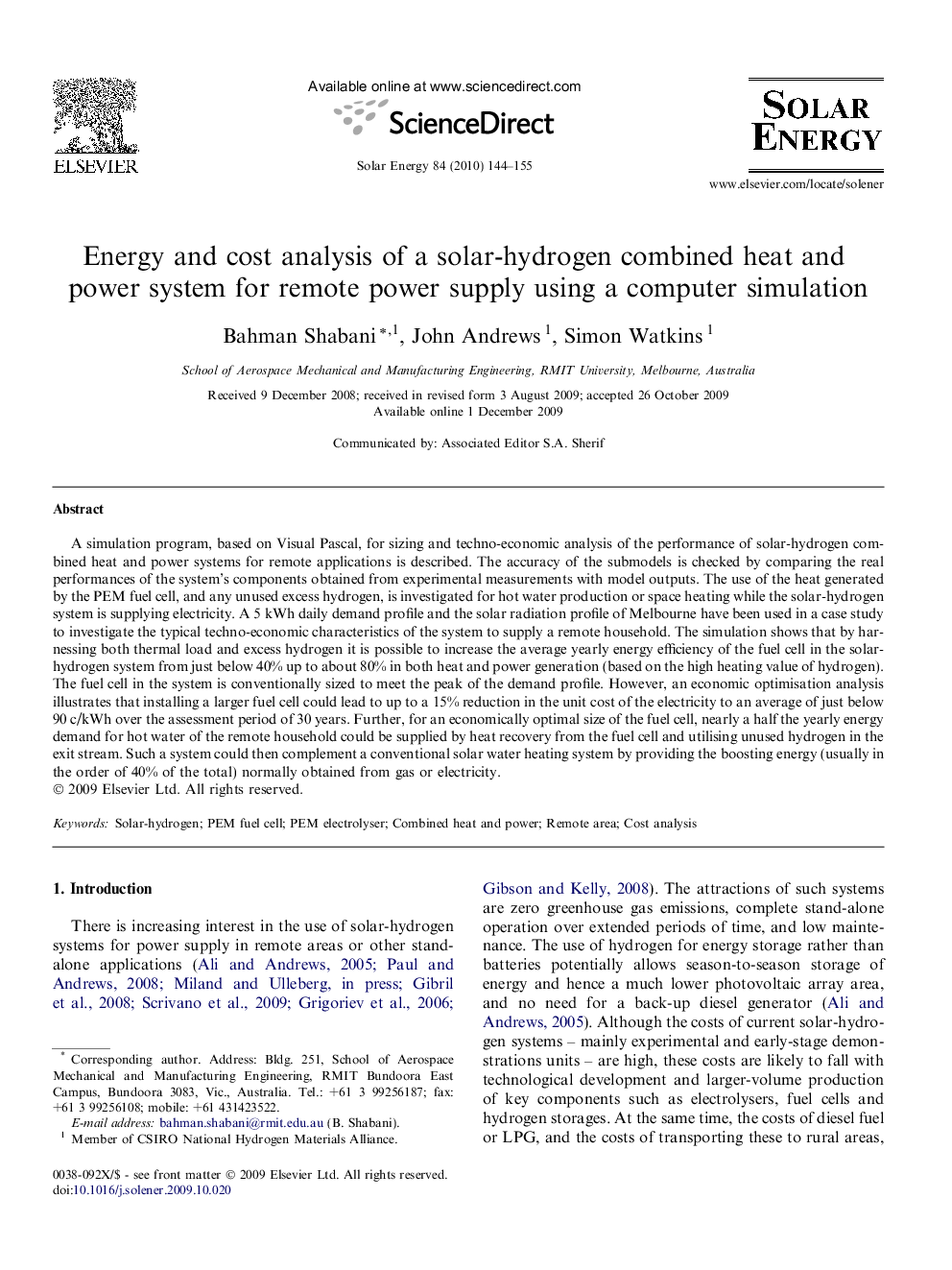| کد مقاله | کد نشریه | سال انتشار | مقاله انگلیسی | نسخه تمام متن |
|---|---|---|---|---|
| 1551415 | 998131 | 2010 | 12 صفحه PDF | دانلود رایگان |
عنوان انگلیسی مقاله ISI
Energy and cost analysis of a solar-hydrogen combined heat and power system for remote power supply using a computer simulation
دانلود مقاله + سفارش ترجمه
دانلود مقاله ISI انگلیسی
رایگان برای ایرانیان
کلمات کلیدی
موضوعات مرتبط
مهندسی و علوم پایه
مهندسی انرژی
انرژی های تجدید پذیر، توسعه پایدار و محیط زیست
پیش نمایش صفحه اول مقاله

چکیده انگلیسی
A simulation program, based on Visual Pascal, for sizing and techno-economic analysis of the performance of solar-hydrogen combined heat and power systems for remote applications is described. The accuracy of the submodels is checked by comparing the real performances of the system's components obtained from experimental measurements with model outputs. The use of the heat generated by the PEM fuel cell, and any unused excess hydrogen, is investigated for hot water production or space heating while the solar-hydrogen system is supplying electricity. A 5Â kWh daily demand profile and the solar radiation profile of Melbourne have been used in a case study to investigate the typical techno-economic characteristics of the system to supply a remote household. The simulation shows that by harnessing both thermal load and excess hydrogen it is possible to increase the average yearly energy efficiency of the fuel cell in the solar-hydrogen system from just below 40% up to about 80% in both heat and power generation (based on the high heating value of hydrogen). The fuel cell in the system is conventionally sized to meet the peak of the demand profile. However, an economic optimisation analysis illustrates that installing a larger fuel cell could lead to up to a 15% reduction in the unit cost of the electricity to an average of just below 90Â c/kWh over the assessment period of 30Â years. Further, for an economically optimal size of the fuel cell, nearly a half the yearly energy demand for hot water of the remote household could be supplied by heat recovery from the fuel cell and utilising unused hydrogen in the exit stream. Such a system could then complement a conventional solar water heating system by providing the boosting energy (usually in the order of 40% of the total) normally obtained from gas or electricity.
ناشر
Database: Elsevier - ScienceDirect (ساینس دایرکت)
Journal: Solar Energy - Volume 84, Issue 1, January 2010, Pages 144-155
Journal: Solar Energy - Volume 84, Issue 1, January 2010, Pages 144-155
نویسندگان
Bahman Shabani, John Andrews, Simon Watkins,